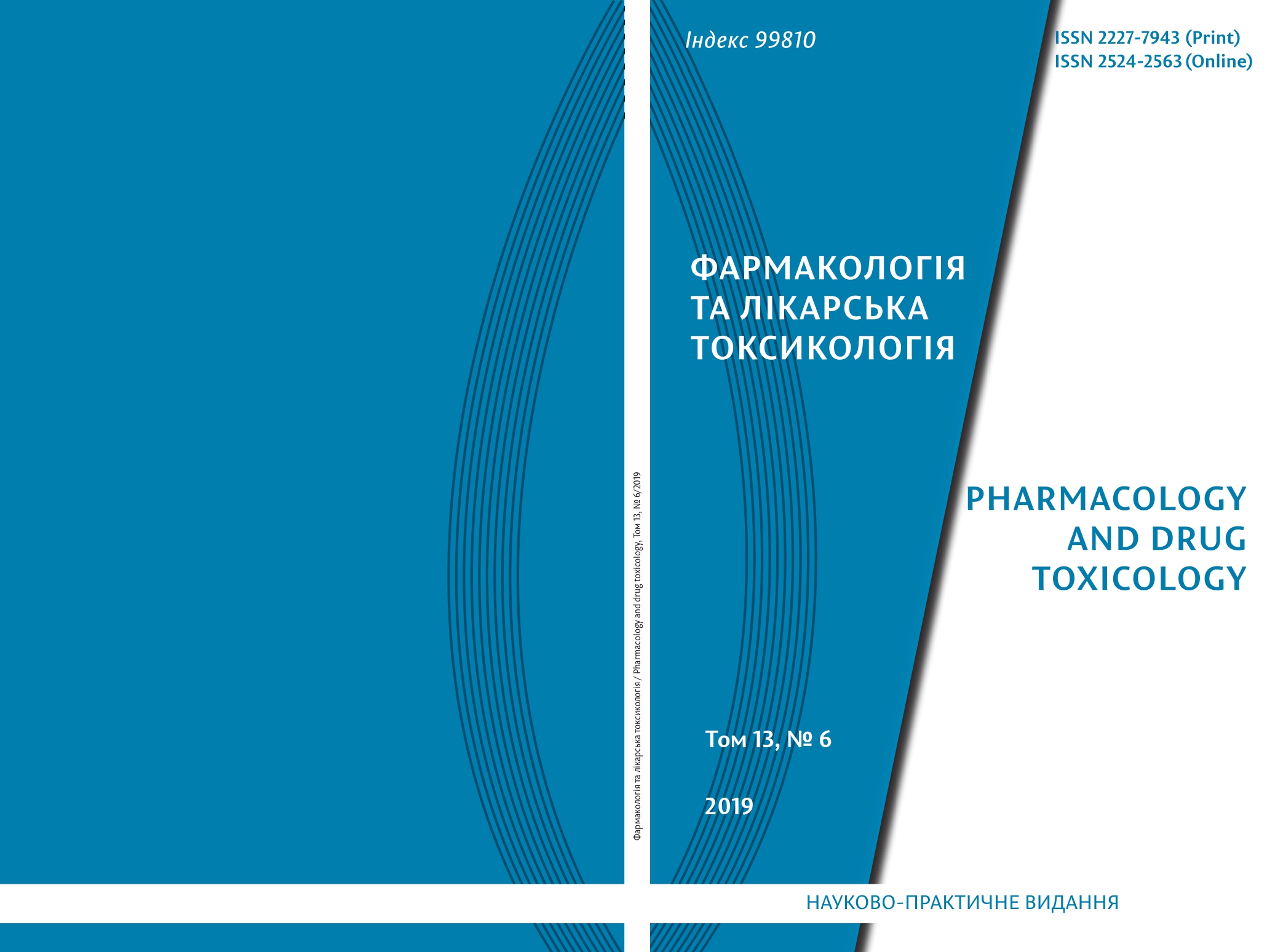Abstract
The aim of the study was a comparative research of the phosphatidylcholine liposomes affinity for some hydrophilic nonaqueous solvents: propylene glycol (PG), polyethylene glycol (PEG) with mol. m. 400 and 1500 (PEG400 and PEG1500), which are used to create soft dosage forms as excipients. The dissociation constant (Cd) of nonaqueous solvents of PG and PEG: PEG400 and PEG1500 with phosphatidylcholine liposome membranes was graphically analyzed in the inverse coordinates based on results of fluorescent probes method. It was found that Cd is 2,5 M for propylene glycol and Cd = 4 • 101 M for PEG400. An analysis of the electronparamagnetic resonance spectra parameters in reverse coordinates showed that the Cd for PEG1500 is 101 M. The effect of propylene glycol and PEG400 in liposome membranes was studied. Propylene glycol and PEG400 bind efficiently to the liposome membrane, displacing the fluorescent probe from the membrane into water. This may be one of the mechanisms of the influence of PG and PEG400 on bioavailability, when pharmacologically active ingredients (FAI) can be displaced into water by excipient molecules, slowing down the absorption process of FAI. The introduction of PEG400 into a suspension of liposomes leads to a decrease in the packing density of phospholipids in the membranes, which can resulf to change in the permeability of cell membranes and increase the bioavailability of FAI. The action of PG on membranes is milder than PEG400. Obviously, in the absorption zone of the FAI on the membrane, the process of absorption of low molecular weight auxiliary substances, for example, nonaqueous solvents, takes place in parallel. In this case, the absorption of lipophilic FAI can occur surrounded by solvents (excipients), which leads to an increase in the bioavailability of FAI. When competing for binding sites on biological membranes of cell surfaces between FAI and nonaqueous solvents, the affinity of solvents lower by several orders of magnitude is compensated by a large number of solvents in a soft dosage form compared with FAI. It has been shown that the mechanism of biocompatibility increasing by PEG is the ability of their molecules (due to compaction (spiralization) or the expansion of molecules) to take the optimal conformation of the structure, providing their hydrophobic or polar groups for optimal binding to nanoparticles, medicinal substances, and biological objects. These results, together with data on Cd for various medicinal substances, will help to assess and predict the degree of competition between FAI and excipients on membranes in dosage forms and predict changes in the bioavailability of drugs.

